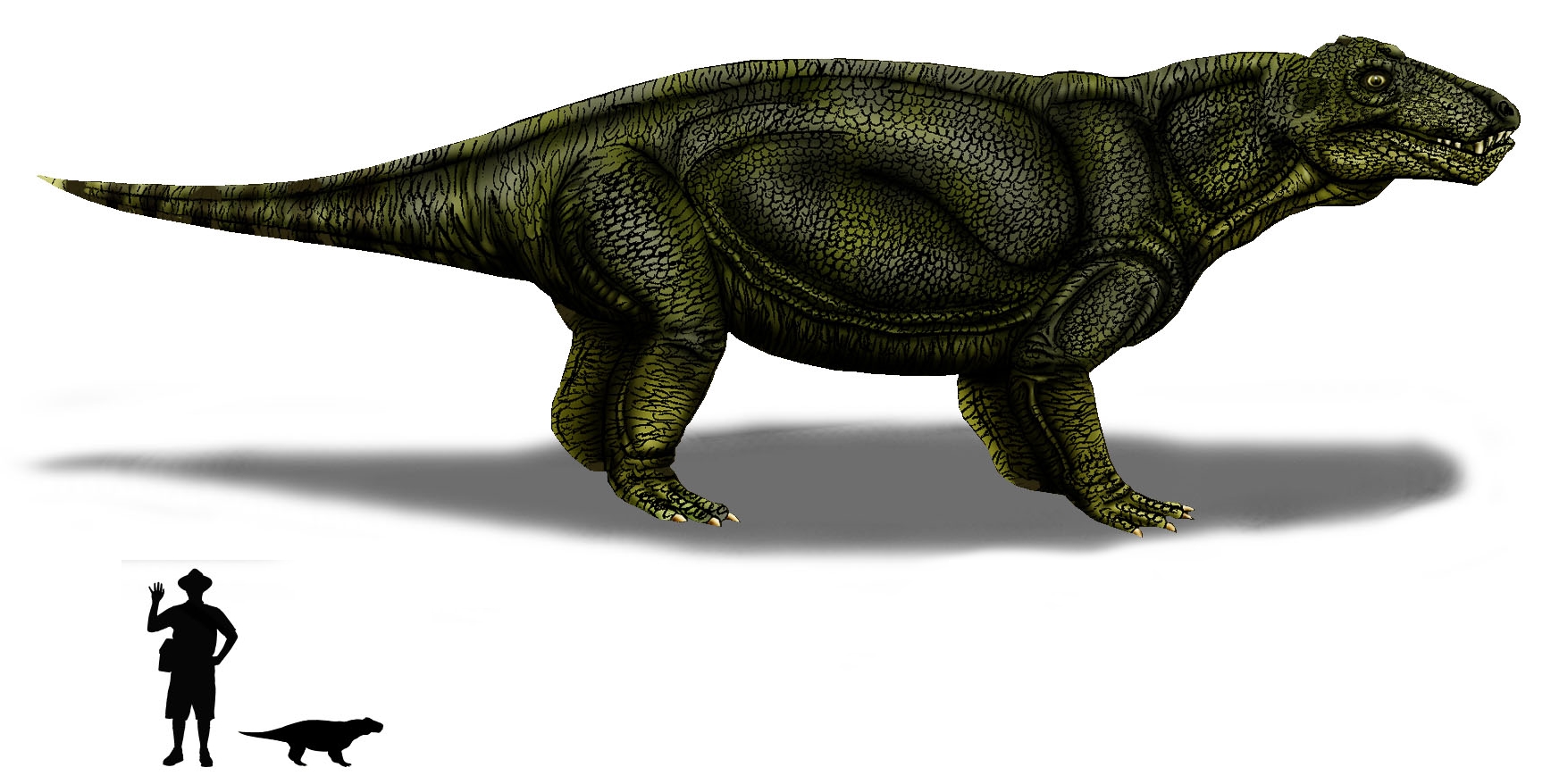Hipposaurus boonstrai copia.jpg on:
[Wikipedia]
[Google]
[Amazon]
 ''Hipposaurus'' ('horse lizard') is an extinct
''Hipposaurus'' ('horse lizard') is an extinct
The main groups of non-mammalian synapsids at Mikko's Phylogeny Archive
Biarmosuchians Prehistoric therapsid genera Guadalupian synapsids of Africa Fossil taxa described in 1929 Taxa named by Sidney H. Haughton Capitanian genus first appearances Capitanian genus extinctions {{paleo-therapsid-stub
 ''Hipposaurus'' ('horse lizard') is an extinct
''Hipposaurus'' ('horse lizard') is an extinct genus
Genus ( plural genera ) is a taxonomic rank used in the biological classification of living and fossil organisms as well as viruses. In the hierarchy of biological classification, genus comes above species and below family. In binomial nom ...
of basal therapsids known from the ''Tapinocephalus'' Assemblage Zone of the Main Karoo Basin, South Africa
South Africa, officially the Republic of South Africa (RSA), is the Southern Africa, southernmost country in Africa. It is bounded to the south by of coastline that stretch along the Atlantic Ocean, South Atlantic and Indian Oceans; to the ...
. Chronologically this is within the Capitanian
In the geologic timescale, the Capitanian is an age or stage of the Permian. It is also the uppermost or latest of three subdivisions of the Guadalupian Epoch or Series. The Capitanian lasted between and million years ago. It was preceded by ...
stage of the Guadalupian
The Guadalupian is the second and middle series/epoch of the Permian. The Guadalupian was preceded by the Cisuralian and followed by the Lopingian. It is named after the Guadalupe Mountains of New Mexico and Texas, and dates between 272.95 ± ...
Series (Middle Permian
The Permian ( ) is a geologic period and System (stratigraphy), stratigraphic system which spans 47 million years from the end of the Carboniferous Period million years ago (Mya), to the beginning of the Triassic Period 251.9 Mya. It is the last ...
). The genus was first described by S.H. Haughton as ''H. boonstrai'' on the basis of a skull and associated skeleton and was later considered a gorgonopsian in the family 'Ictidorhinidae' by Robert Broom. It is now considered a basal biarmosuchia
Biarmosuchians are an extinct clade of non-mammalian synapsids from the Permian. They are the most basal group of the therapsids. All of them were moderately-sized, lightly-built carnivores, intermediate in form between basal sphenacodont " pelyc ...
n, but its affinities remain uncertain. ''H.boonstrai'' is currently known from only two specimens in the Iziko South African Museum
The Iziko South African Museum is a South African national museum located in Cape Town. The museum was founded in 1825, the first in the country. It has been on its present site in the Company's Garden since 1897. The museum houses important ...
, Cape Town.
"''H.brinki''" is based on a single skull
The skull is a bone protective cavity for the brain. The skull is composed of four types of bone i.e., cranial bones, facial bones, ear ossicles and hyoid bone. However two parts are more prominent: the cranium and the mandible. In humans, th ...
that was described by D. Sigogneau in 1970;Sigogneau, D. 1970. Révision systématique des gorgonopsiens Sud Arficains. Cahiers de Paléontologie, Paris. n French
N, or n, is the fourteenth letter in the Latin alphabet, used in the modern English alphabet, the alphabets of other western European languages and others worldwide. Its name in English is ''en'' (pronounced ), plural ''ens''.
History
...
/ref> however, the poor condition of the holotype means most considerations of biarmosuchians ignore it.
See also
*List of therapsids
This list of therapsids is an attempt to create a comprehensive listing of all genera that have ever been included in the Therapsida excluding mammals and purely vernacular terms. The list includes all commonly accepted genera, but also genera tha ...
References
;GeneralThe main groups of non-mammalian synapsids at Mikko's Phylogeny Archive
Biarmosuchians Prehistoric therapsid genera Guadalupian synapsids of Africa Fossil taxa described in 1929 Taxa named by Sidney H. Haughton Capitanian genus first appearances Capitanian genus extinctions {{paleo-therapsid-stub